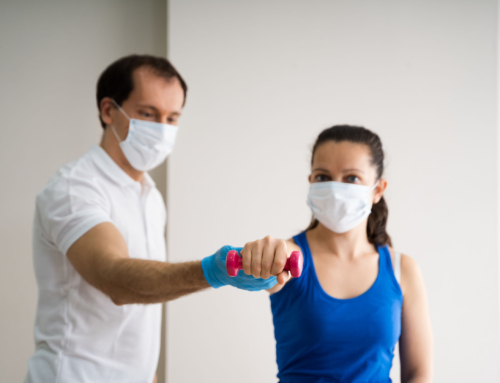Learn more about Common Running Injuries
Indoor and outdoor running can be great for your health. For beginner runners as well as more experienced long-distance runners, injuries can be all too common. The best treatment for injuries sustained from running is early management and education on self-care specific to the injury.
Ready to learn more? The professional team at Momentum Physical Therapy lists some of the common running injuries that runners sustain.
Please note, if you are experiencing lasting pain that affects your ability to complete your run or activities throughout the day, do not modify your behavior – talk to your physical therapist. A quick chat with a professional PT can save you from a painful injury, and time in the long run.
(Did you see what we did there? Long run??)
IT (Illiotibial) Band Syndrome
IT Band Syndrome is a condition where the connective tissues in the body rub against the thighbone. This can cause great pain to a runner, and sustain long-term damage to the muscular structure of their body. This common injury is typically caused by improper footwear and increasing mileage and/or intensity too quickly. Symptoms of IT Band Syndrome include sharp pain between a runner’s hip and knees. This pain usually worsens with physical, strenuous activity.
How to treat IT Band Syndrome
In most cases, IT Band Syndrome can be healed with treatment from a professional Physical Therapist. In some cases, corticosteroid injections or even surgery may be needed. In all cases, it is always best to consult with a professional for any muscular injuries and treatment.
Piriformis Syndrome
Deep in your buttock region, under the gluteus maximus you have a piriformis muscle. Occasionally the priformis muscle can irritate your sciatic nerve, located nearby. This causes pain, numbness and tingling along the back of the leg and into your foot. Piriformis Syndrome is caused by muscle tightness, swelling of the piriformis muscle and even bleeding in the piriformis muscle. All of these symptoms are linked to muscle injury due to improper movement or stress on the muscle. This is typically due to poor running mechanics, typically associated with weak hips and core.
How to treat Piriformis Syndrome
There are a number of treatment options for healing Piriformis Syndrome. Above all, always consult with a professional before attempting any treatment for muscle pain or repair. A professional Physical Therapist might recommend ice packs or an ice massage so heal your muscles. Medications and steroids are also options in more extreme cases.
Shin Splints
Shin splints are one of the most classic injuries sustained by runners. Improper footwear, lack of flexibility in claves and running on hard surfaces are all common causes for shin splints. The pain of shin splints is specifically caused when muscles, tendons and bone tissue are overworked without proper rest periods and massages in between. While rarely a serious condition, it is always recommended to consult with a professional before attempting any muscular treatment on your own.
How to treat Shin Splints
After consulting with a muscular professional, healing from shin splints largely includes rest, ice and pain medication. In some cases, prescription medication may be necessary.
Plantar Fasciitis
Often known as “policeman’s heel”, Plantar Fasciitis is when a thick band of tissue between the heel bone and toes become inflamed. Symptoms often include stabbing pain near the heel that is often worse in the morning. The cause of Plantar Fasciitis is largely unknown, but it does appear to be triggered by long periods of standing. Tension and stress on the fascia cause small tears on the thick tissue, resulting in pain and potentially decreased mobility.
How to treat Plantar Fasciitis
There are many treatment options for plantar fasciitis. Wearing supportive, cushioned shoes, massaging the inflamed area, and using a night splint to reduce tightness in the calf muscle are all options when seeking treatment. No matter how common a physical injury is, it’s best to consult with a professional before self-diagnosing or seeking treatment on your own.
Runner’s Knee
Clinically known as Patellofemoral Pain Syndrome, Runner’s Knee is often caused by a structural defect leading to a certain way of walking or running. This can be caused by a kneecap that is too high to the knee joint, excessive training or overuse of knees, tight hamstrings, and tight Achilles tendons. Symptoms include pain in and around your kneecap, a rubbing or clicking sound in the kneecap, and tenderness to the touch.
How to treat Runners’ Knee
Treatment choices for Runner’s Knee largely depend on each individual’s needs, pain tolerance, and age. After consulting with a professional, treatment may include cold packs, elevating the leg, a compression wrap, stretching and arch support in shoes. Runner’s knee can sometimes be prevented by increasing activities gradually, wearing good running shoes, and stretching before running.
Achilles Tendinitis
Stress to your achilles, also known as Achilles Tendinitis, occurs when a runner suddenly increases the intensity and duration of their run. Symptoms of Achilles Tendinitis typically begin with a mild ache in the back of their leg, or above the heel after running or other sports activities. When you start to experience pain in your achilles, be sure to consult with a medical expert, otherwise you can risk a torn or ruptured Achilles tendon.
How to treat Achilles Tendinitis
The highest-rated solution to healing Achilles Tendinitis is professional PT. Physical Therapists usually prescribe specific stretching and strengthening exercises to promote healing and strengthening. Orthotic devices such as shoe inserts may also be prescribed. In the case where an Achilles tears or ruptures, surgery may be required.




